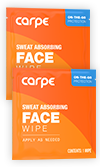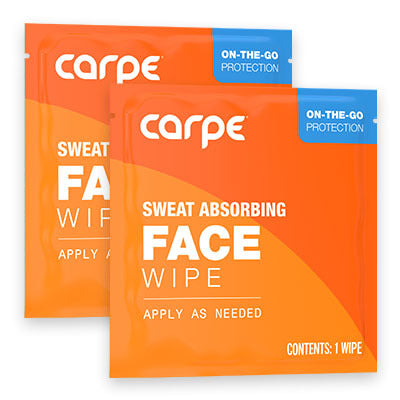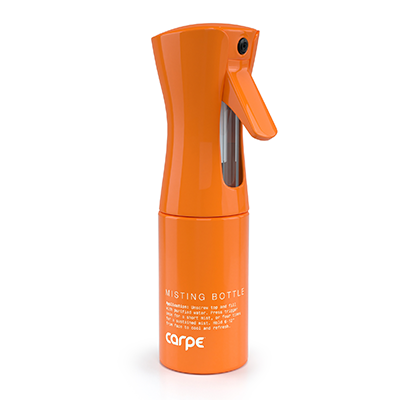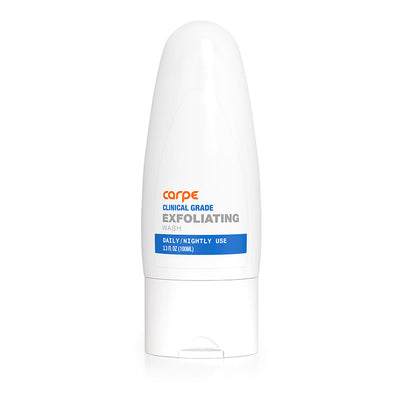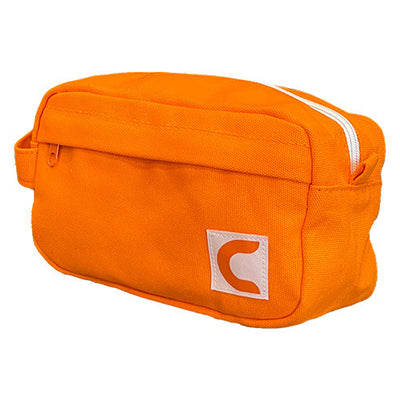It can be challenging to decide which antiperspirant is the right one for you, especially when many people don't understand what antiperspirant does and how it is different than deodorant. Antiperspirants actually block the production of sweat, while deodorants have antibacterial properties and contain scents to mask the smell of body odor. There are a plethora of over-the-counter topical treatments for hyperhidrosis, which can make it overwhelming when trying to figure out which one will be most effective. Antiperspirants are considered to be the first-line treatment for someone with primary focal hyperhidrosis as they are easily accessible, noninvasive and quite effective for many people. They are advantageous because they can be used on a wide variety of body parts that are affected by excessive sweating such as the palms of the hands, soles of the feet, the armpits, the face, and even the groin and back.[1] The key to finding the right antiperspirant is understanding the ingredients that are used in them and understanding what is written on the label.
Antiperspirant Strength
Antiperspirants come in a variety of strengths and it is important to understand what this actually means. Typically, brands have a regular strength option and a clinical strength option. The regular strength option may contain a different active ingredient than the clinical strength version, or it may have the same active ingredient but contain a smaller percentage of it.[1] There is also a significant price difference between the two. For example, Dove has a regular strength antiperspirant (they call it Advanced Care) that uses Aluminum Zirconium Tetrachlorohydrex Gly 15.2% as it’s active ingredient, while its clinical strength version uses Aluminum Zirconium Tetrachlorohydrex Gly 20%. On Amazon, the price of the regular strength is $8.10 for two bottles and it is $8.52 for one bottle of the clinical strength version. The clinical strength version of Dove contains 5% more of the active ingredient, but the price is about 50% higher than the regular. This demonstrates why it is so important to read the information about an antiperspirant product before you buy it. Clinical strength products are less likely to cause irritation and almost always contain a newer generation of active ingredients that are typically more effective.[1] Some of the brands that include a clinical strength option are Dove, Gillette, Secret, Arrid, Sure, PerspireX, Certain-Dri, SweatBlock, Degree, Hydrosa and various others.
Antiperspirant Ingredients
The active ingredient is what makes an antiperspirant work. The most common active ingredients used in antiperspirants are aluminum chloride and aluminum chloride hexahydrate. Many antiperspirants also use other metallic salts as an active ingredient, which act in a similar way as aluminum chloride. All over-the-counter antiperspirants have active ingredients that mechanically block overactive sweat glands from producing more sweat. Here is a break down of the common active ingredients in antiperspirants, and how they work:
Aluminum Chloride
Aluminum prevents sweat from being produced by obstructing eccrine sweat gland ducts so that sweat cannot be released. Aluminum chloride is in a partially neutralized form, as opposed to aluminum chloride hexahydrate, which is in an active form. Metal ions in the aluminum interact with other molecules in the skin in such a way that the epithelial cells in sweat glands are damaged and form a sort of plug. Sweat glands can still produce sweat, but the sweat cannot make it to the surface of the skin because of the plug. The plug formed by aluminum chloride lasts for about 24 hours. Eventually, the epithelial cells of the sweat glands recover and a new layer of aluminum chloride must be applied. Long-term histologic studies have shown that when people use aluminum chloride for a long period of time the aluminum actually damages some of the secretory cells within the sweat glands. This can cause a permanent reduction in the amount of sweat produced and, therefore, reduced symptoms of hyperhidrosis. Aluminum chloride is effective at reducing sweat production, but some studies have found that aluminum chloride can be quite irritating. Doctors may recommend using 1% hydrocortisone cream to treat irritation caused by aluminum chloride. Several years ago there was controversy over whether or not aluminum antiperspirants cause cancer, but it has been found that they do not.[1]
Aluminum Chloride Hexahydrate
Antiperspirants with aluminum chloride hexahydrate are usually clinical strength. When offered in a concentration of 20% or higher a prescription is required. Aluminum chloride hexahydrate is typically used if aluminum chloride alone is not effective.[1] Aluminum chloride hexahydrate is thought to work in a similar way to aluminum chloride, but its exact mechanism is not understood. Some researchers posit that there is an interaction between aluminum chloride hexahydrate and keratin in sweat ducts that causes the ducts to close. Another theory is that aluminum chloride hexahydrate works on secretory epithelial cells within sweat ducts. In either case, it has studies have proven that aluminum chloride hexahydrate is very effective at reducing sweat production.[1]
Irritation From Aluminum Antiperspirants
One of the drawbacks of using aluminum chloride or aluminum chloride hexahydrate is that they can be very irritating. This is partly because hydrochloric acid forms when a body part with aluminum chloride or aluminum chloride hexahydrate is exposed to water. Sometimes patients are told to use 1% hydrocortisone cream in order to combat irritation.[1] One study found that when mixed with salicylic acid, aluminum chloride hexahydrate produced much less irritation and still effectively reduced sweating. Some products now use both of these ingredients together in order to reduce side effects. Several products on the market today use this successful combination.[3]
Aluminum Zirconium Trichlorohydrex
Newer, clinical strength over-the-counter antiperspirants often use an ingredient called aluminum zirconium trichlorohydrex to reduce sweating associated with hyperhidrosis. These products have been shown to provide more sweat protection and cause less irritation than aluminum chloride products. They produce less irritation because produce as much as 80% HCl than aluminum chloride. Aluminum zirconium trichlorohydrex blocks sweat ducts in a similar way to aluminum chloride, but at a more superficial level. The type of blockage made by aluminum zirconium trichlorohydrex lasts for around seven days. It also produces much less HCl, the chemical that causes skin irritation, than typical aluminum chloride formulations. These newer products may provide a solution for people with sweating in more sensitive areas.[1]
Aluminum Sesquichlorohydrate
Another active ingredient called aluminum sesquichlorohydrate is now being used in some of the newest antiperspirants on the market. It is said to cause less irritation but still effectively reduces sweating. Currently there are no major studies corroborating its effectiveness although these may come in the future.
Choosing an Antiperspirant
Once a person is able to understand how to read an antiperspirant label, and the advantages and disadvantages of each type of active ingredient, they can pick an antiperspirant that will work for them. It is also important to consider the part of the body the antiperspirant will be used on. If, for example, someone needs an antiperspirant for the face or groin, which are sensitive areas they should be careful to only use formulations designed for sensitive skin. They may want to choose a product with aluminum chloride hexahydrate mixed with salicylic acid, aluminum sesquichlorohydrate, or use one of the newer generation products with aluminum zirconium trichlorohydrex.
It is best to try the regular strength products before moving on to stronger formulations, as they are less likely to cause irritation. Formulations with 10 to 15% aluminum chloride hexahydrate can be used to treat axillary hyperhidrosis, while those who need treatment for sweaty hands or feet will probably need to use 30% aluminum chloride. Make sure to apply antiperspirant correctly, or it may be less effective. If over-the-counter antiperspirants are not enough, then prescription antiperspirants are the next step. It can also be helpful for people with hyperhidrosis to employ some other strategies to manage their hyperhidrosis via alternative methods like choosing clotheing that promotes less excessive sweating and learning how to put antiperspirant on correctly.
Sources
- Pariser, D. M. (2014). Hyperhidrosis (4th ed., Vol. 32). Philadelphia, PA: Elsevier.
- Ellis, H., & Scurr, J. H. (1979). Axillary hyperhidrosis - topical treatment with aluminium chloride hexahydrate. Postgraduate Medical Journal, 65(650), 868-869. doi:10.1136/pgmj.55.650.868
- Huddle, J. R. (2014). Hyperhidrosis: Causes, Treatment Options and Outcomes. New York, NY: Nova Science.




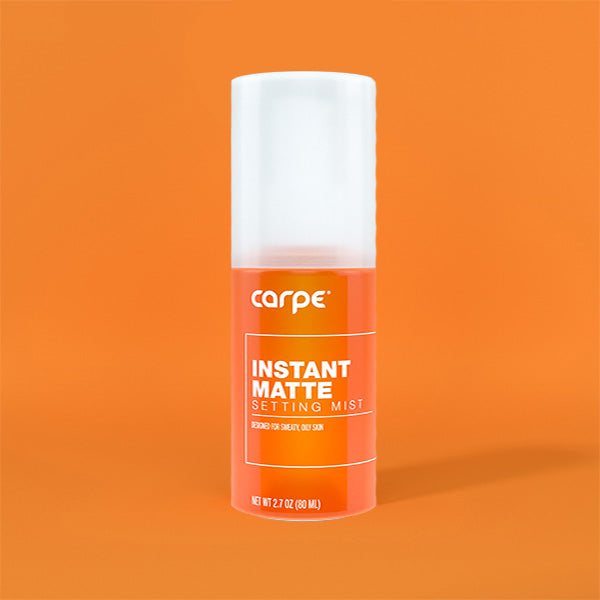

16790753702383.jpg?v=1679075372)

16790746985853.jpg?v=1679074700)


16790757289763.jpg?v=1679075731)






